When troubleshooting kombucha problems it’s important to know what healthy kombucha is supposed to be like. Using your senses and observation you’ll be able to know that your kombucha is safe and healthy.
Kombucha is a beneficial tonic beverage that has many health benefits. Rich in natural detoxifiers, Kombucha fights free-radical damage in your body, energizes you, and gives you many probiotics to help with digestion, brain health, and fighting the bad bacteria and viruses in your environment. Plus you can make Kombucha at home using just tea and sugar so that these awesome health benefits come to you for just pennies a glass. See my directions for making Kombucha at home here.
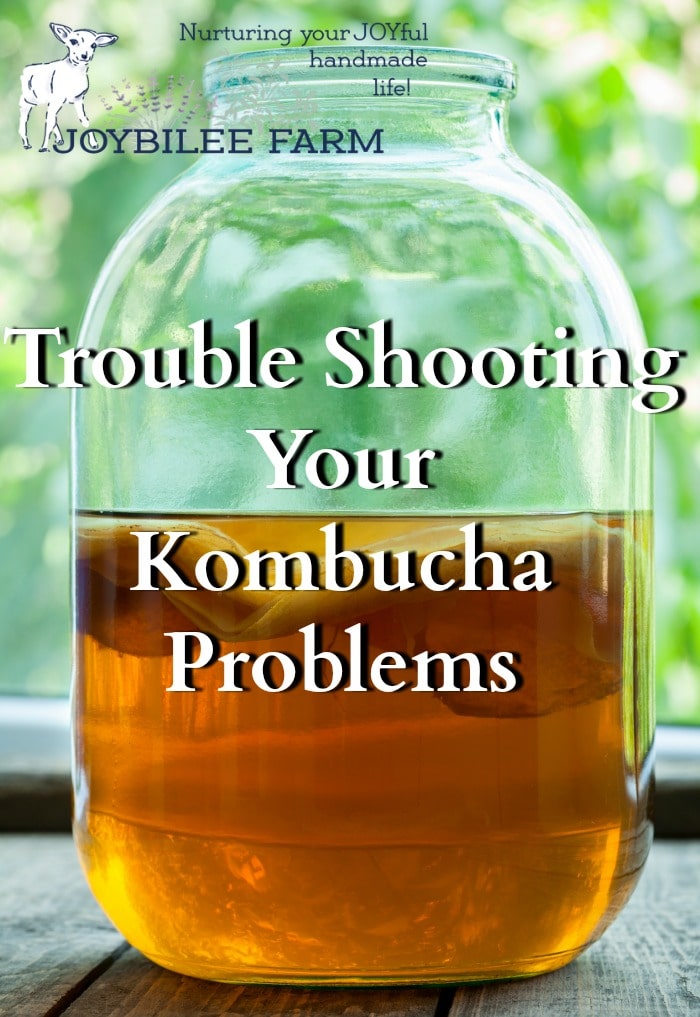
Here’s a quick chart for proportions of tea/sugar and starter for different size batches of Kombucha:
|
Container Size |
Amount of Tea | Amount of Sugar | Amount of water | Cups of Starter |
| 1 quart/litre | 1 ½ tsp. loose tea /2 tea bags | ¼ cup | 3 ½ cups | ½ cup |
| 2 quarts/litre | 1 T loose or 5 bags | ½ cup | 7 cups | 1 cup |
| 1 gallon | 2 T loose or 8 bags | 1 cup | 13 1/2 cups | 2 cups |
Second Fermentation method:
Many people enjoy fizzy kombucha. This fizziness is obtained by making a second ferment, where the carbon dioxide is prevented from escaping. When making the second fermentation you can add 1 cup of fruit or fruit juice for every 7 cups of finished Kombucha, which is basically replacing the starter that you remove with fruit juice. The second ferment is bottled in individual serving sizes. These second fermentation bottles should be capped tightly to allow the fizz to build up. See more about making fizzy kombucha here.
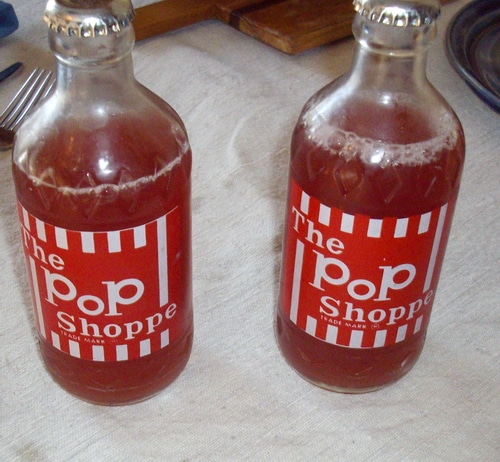
Conditions necessary for perfect Kombucha:
Kombucha is a fermented drink and is very easy to make in the right environment.
To make kombucha you need:
- clean jars and utensils,
- non-chlorinated water
- strong tea
- real sugar
- 70F temperature
- 4 to 7 days
If you give kombucha these conditions, your kombucha growing career will be free of problems. However, if any of these elements are missing, you may have a few issues with your Kombucha brewing. Some problems can be fixed, but other kombucha problems are irreparable.
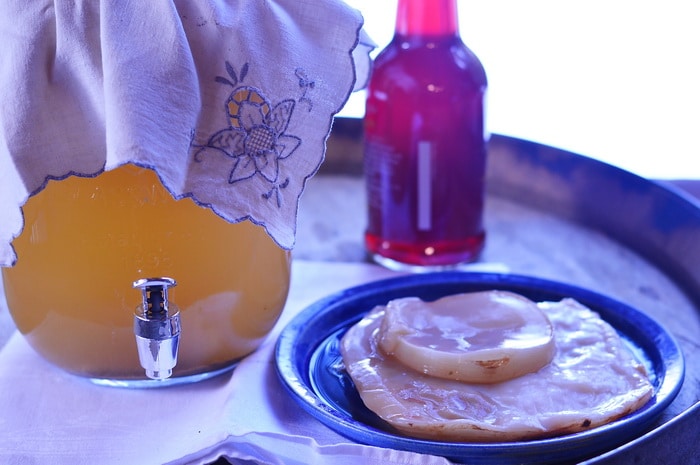
Kombucha troubleshooting guide
When making Kombucha you are dealing with a live, acidic, probiotic culture. As long as the culture can colonize the solution of tea and sugar quickly, it will successfully compete without any bad bacteria, like molds, in the environment. However, if the colonization is too slow, bad bacteria can take hold of your Kombucha solution. This can be a serious problem that makes your kombucha unsafe for human consumption.
But not all kombucha troubles are serious. Some are just inconvenient. In this kombucha troubleshooting guide, I’ll take you step-by-step through the diagnosis of typical kombucha problems so that you know if your kombucha is safe to drink, and also what you can do next time to avoid kombucha troubles.
Here are 6 things that can go wrong when you are brewing kombucha and some suggestions of how to avoid kombucha trouble in your next batch.
1. My Kombucha is too acidic and tastes like vinegar
You left your Kombucha too long to ferment. Properly fermented Kombucha should be between a pH of 4 and a pH of 2. If it gets lower than 2, it will taste like vinegar. A lot of bottled Kombucha has this vinegary quality, as raw Kombucha continues to ferment even after bottling, even at refrigerator temperatures. The sooner it is drunk after it has reached its ideal pH the better it will taste.
You can use Kombucha that tastes vinegary for the starter on your next batch of Kombucha. You can also use it in place of vinegar in salad dressings, marinades, and sauces. You can add it to bone broth to help extract the vital minerals from bones and cartilage, as well. You can use vinegary kombucha in a recipe that calls for vinegar or lemon juice, like a jerky recipe. You can also use acidic kombucha in all-purpose cleaning solution recipes, in place of vinegar.
Vinegary Kombucha is safe to consume, it just tastes a bit sourer than is pleasant to the taste.
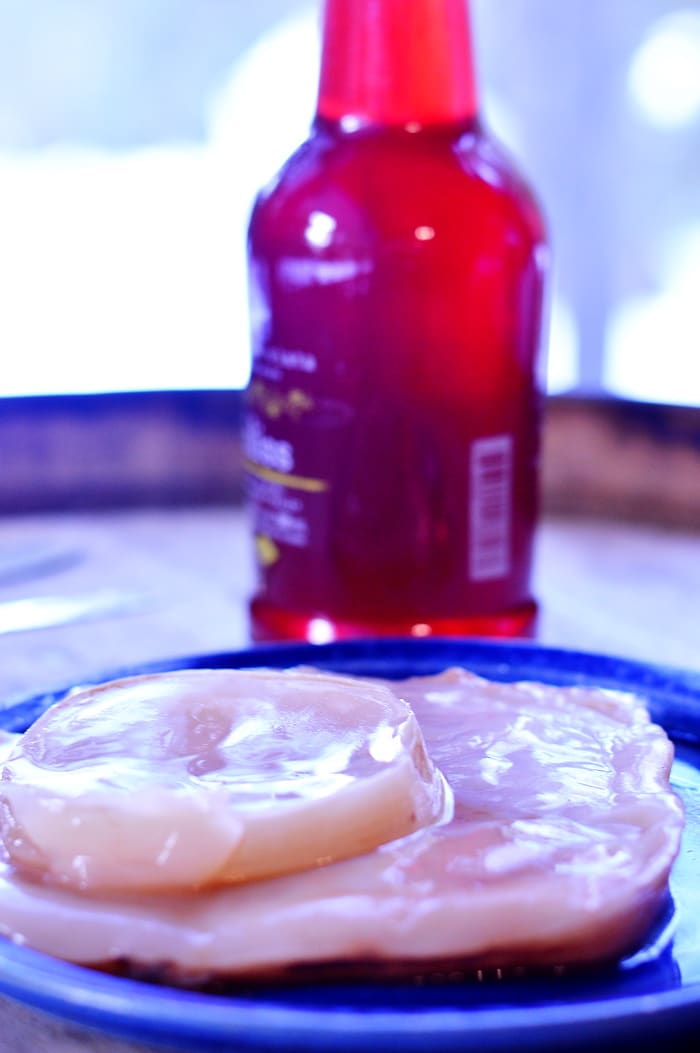
2. My Kombucha mushroom is brown on top but doesn’t have any mold.
This is normal. The Kombucha mushroom will grow darker and darker as it thickens, with each new batch of Kombucha. It will also grow baby scobies (mushrooms) on top of the original scoby. These can be pulled apart, gently, to start a new batch of Kombucha, or to give to a friend. You might even use a layer of your kombucha scoby to make a DIY kombucha starter kit for a gift.
3. My Kombucha has hairy black, orange, green, or red mold on top of the scoby.
While most kombucha is strong enough to fight off the invasion of bad bacteria, sometimes things can go wrong. If you find a mold of any color on top of your kombucha scoby or in the top or sides of your fermenting jar, you’ll need to take drastic measures. Do not consume any kombucha coming from this batch. Do not use the scoby to make a new batch.
Most likely the problem is that your Kombucha got too hot or too cold during the first ferment. This can happen if the tea was still warm when it was added to your fermentation jar. In a wood-heated house, nighttime temperatures can drop too low to keep the probiotic bacteria active in the fermentation jar.
Another possible cause is contaminated utensils or fermentation vessels. If you are fermenting sourdough bread, cheese, or other fermented food near your kombucha there can be cross-contamination between the kombucha and the other ferments.
Throw out the entire batch including the scoby. Get a fresh scoby from a friend and start again, with well-boiled water. Sanitize all containers and utensils before making your next batch of kombucha. This will help prevent troubleshooting kombucha with this problem again.
Move your fermenting Kombucha to a clean cupboard away from other sources of contamination. Cover with a clean linen handkerchief or tea towel to keep out dust. Do not use cheesecloth as the weave is not tight enough to exclude pests.
4. My Kombucha hasn’t changed in 5 days. It is a pH of 7 and the scoby is at the bottom of the jar.
Your tea was too hot when you put your scoby and starter into the jar and it killed the Kombucha colony. For troubleshooting kombucha with this problem, start again with a new scoby and new starter Kombucha.
5. My Kombucha smells or tastes bad – not vinegary, just bad.
Don’t drink it. Throw it out. Start again with a fresh scoby and fresh starter. Don’t risk drinking anything that might have bad bacteria in it. Kombucha should taste slightly acidic, with a fresh, sparkling taste – a bit like apple cider vinegar in honey. There should be no putrid smell or taste.
6. My scoby is black, not moldy just black.
Your scoby has died. Throw it out and any batches that were made with it, and obtain a fresh scoby. Your scoby may be old – they have a lifespan. You may have started the batch with tea that was too hot.
This is what a healthy kombucha scoby looks like:
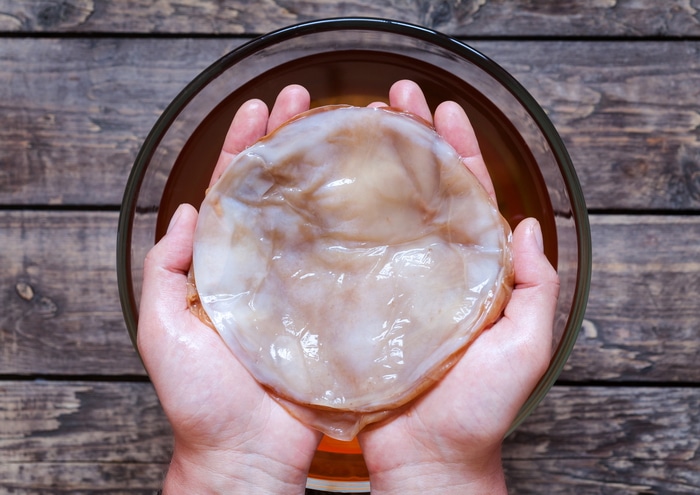
Err on the side of caution:
These tips are suggestions for getting the most from your batches of Kombucha. Always use your own common sense when making fermented foods in your own kitchen. Never risk your own or your family’s health by consuming something that you believe has gone “off”. Err on the side of caution.
Because of the acidic nature of Kombucha, it is very rare for anything to go wrong with properly made batches of Kombucha. If you are careful to clean and rinse your utensils and jars, use an acidic starter – either a previous Kombucha batch of vinegar and a clean and active scoby, you will have many, many years of happy Kombucha making and consuming.
Your active kombucha culture should give you Kombucha of the correct pH of 2.5 to 4 within 5 to 7 days. You should have baby scobies forming on the top of the jar or the top of the mature scoby. These can be separated from the mother culture and used to ferment fresh batches of Kombucha.

Kombucha Tip
After you’ve made kombucha for several months your kombucha scoby will thicken with layers of the mother scoby.
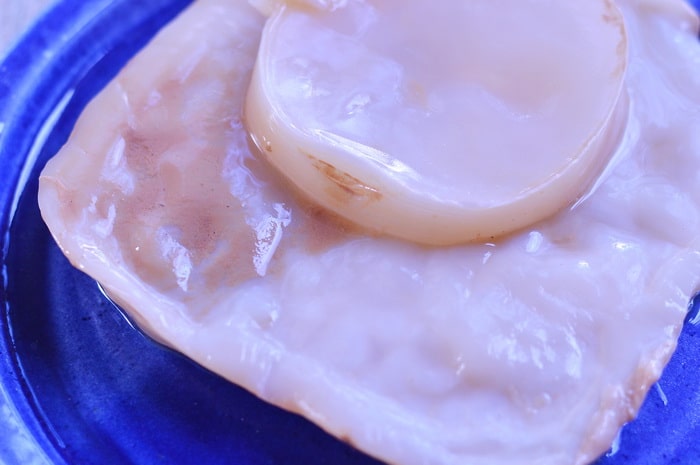
These can be separated from the mother scoby by peeling off the layers. Save these baby scobies in a “kombucha hotel”. Cover the scobies with that vinegary kombucha and cover with a normal jar lid. You can leave them at room temperature on the kitchen counter or in a cupboard or pantry. This way you’ll always have healthy scobies to begin a new batch, help you troubleshooting kombucha, and give to a friend who may need a fresh start. You can even make Boochie Salt Scrub using these instructions.
Your Turn:
What are your successes, or failures, with Kombucha? Looking at these troubleshooting steps and options, did we miss something? Is there another troubleshooting option you would add? Leave a comment.
Articles in this Joybilee Farm Kombucha Series
Secret super-healing power of Kombucha and how to grow your own — Part 1
Making your own super-star healing tonic in sufficient quantities for your family – Part 2
Super-star secrets to help you break the soda habit — 2nd ferment Kombucha – Part 3
What can go wrong? Trouble Shooting your Kombucha problems – Part 4 (This post)
6 Ways to incorporate Kombucha into your lifestyle – Part 5



Hi. I’m a 1st time kombucha brewer, my scoby has a air bubble on the top.. I was told to stab it with a knife.. was that the wrong thing to do? Help! I hope didn’t kill her.
Can you check the pH of your bottles? It should be around 3 to 3.5. If it is, all is well. If it isn’t you might need to wait longer to bottle. The scoby being at an angle in the new batch isn’t a problem. It might just be that it is in a cooler spot and is taking longer to grow.
Hi! Three weeks ago I started my very first batch of kombucha. It bubbled along until a few days ago when the activity in the jar stopped. When I tasted it, it tasted sweet but smelled kombucha-y so I bottled it anyway (thinking it should be done after 3 weeks) with blueberries and two raisins in each bottle, and started a new batch with a cup of the old as a starter. I used green tea and orange pekoe tea in both batches.
Today the scoby is lying at an angle in the new batch, and there is not fizzing at all in the bottles, though it still smells nice. Have I done something wrong?
Thanks for your help!
Hi, I got a SCOBY with some starter liquid from a neighbor/friend and brewed my first gallon batch of Kombucha. (1F)
I used loose leaf black tea, The brew time was 12 days, the temperature may have been around 70 degrees, +- 3-4.
The brew is drinkable but I am not completely satisfied with the taste of it.
Here is how it tastes, compared to GT Storebought Kombucha and a friend’s homemade kombucha that I have tasted before
The Good
– Can’t taste any Sugar or Sweetness, less sweet than GT (That is good I like it)
– Have decent fizz for 1F (Pretty happy with the fizz, even at 1F I can hear the pop in GT bottles)
The Bad
– Can still taste Tea – need tips on reducing this, my point of reference is store bought GT kombucha and that just tastes sour, I tried some homemade kombucha from a friend too and it was sour and vinegary as well which I prefer.
– Strong after-taste of Tannins on my tongue – I may have let the tea steep for too long, will fix this on the next batch
– Felt there was decent caffeine left in the brew (need to reduce this as well, may be related to the Tea and Tannins I mentioned above)
– Lacks a bit on the vinegary/sour smell – My friend’s starter liquid and the ziplock everything came in had a pretty sweet and sour smell almost like an Asian restaurant kitchen, would like to have more vinegary/sweet and sour smell
– Lacks body – tasted a bit like kombucha with black tea diluted with water, would like to have more of a body and concentration
– Isn’t as sour as I would like for it to be (maybe related to the lack of body I mentioned above)
So where can I improve and what I may have done wrong?
– Will only be steeping my tea for 15 minutes as per instructions
– Should I have let the brew continue a bit longer? – When I tested the taste I did not taste any sweetness so I assumed the brew is over since there is no sugar left to feed the colony
– Also, I heard that the taste improves after brewing multiple batches as the scoby gets bigger – is that true? My scoby currently is quite small
To salvage a bit of this batch, I am thinking of doing 2F with fruit purees and ginger hoping that will bring the taste more to my liking however I already bottled and put the batch in the fridge. Is it possible to take the bottles out of the fridge add the fruits/sugars and do a 2F on these for a couple of days and put them back in the fridge or will there be issues?
It’s probably caused by the fermentation of the carrot juice. I’d leave the carrot juice out of the batch and just add it before you drink it. Kombucha normally has a small bit of alcohol in it. This is changed to acetic acid as the fermentation progresses. You may have caught it too soon or you might have too much sugar. The yeast can over power the other bacteria if the balance isn’t right.